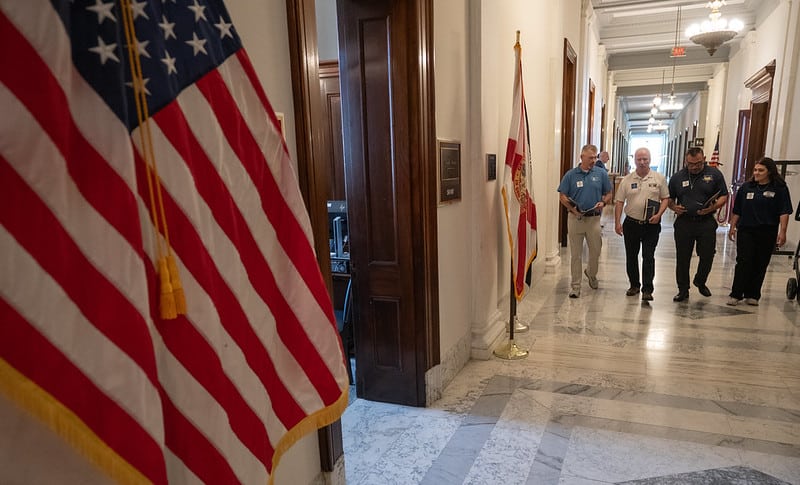
My Workers Are Better Than Your Workers
Last year, the average Fortune 500 CEO got an 8.8 percent pay bump. The average worker, not so much: 1.3 percent. This follows a 30-year trend. During that time, corporations were very, very good to CEOs. The Economic Policy Institute, a nonpartisan think tank, has calculated that from 1978 to 2011 CEO pay rose 725 percent.
During those same years, worker pay increased only 5.7 percent. As corporate profits rose since 1970, the share of those earnings that workers received in wages fell. The money was there. Corporations showered CEOs with it but denied it to the workers whose labor produced it.
The New York Post noted this in a story about Domino’s Pizza shareholders protesting the corporation’s executive pay packages. The corporate board delivered $43 million to CEO J. Patrick Doyle over the past three years. That prompted the Post to lead its story with this: “Hey, J. Patrick Doyle, save some dough for the pizzas.”
Domino’s workers don’t get the same treatment as Doyle. Twenty-three Domino’s outlets in New York admitted to wage theft – cheating their already low-paid workers out of earnings. Hey, J. Patrick Doyle, save some dough for the workers!
One reason this occurs is the my-dog’s-bigger-than-your-dog pathology of corporate boards. They want to brag that they’ve got the best CEO, and their measure of the man is the size of his pay package.
It’s certainly not based on performance since boards continue paying CEOs big bucks, even granting them bonuses, when stock prices fall. For example, the board of Alpha Natural Resources, one of the nation’s largest coal companies, gave its CEO a $2 million bonus after stock prices slumped and the government fined the company $27.5 million for polluting.
The my-dog’s-bigger pay program works like this: Corporate boards look at rival executive compensation, then pay their own CEO more to prove he’s the best. This, according to University of Delaware researchers Charles Elson and Craig Ferrere, spirals CEO pay continuously upward.
Unfortunately for workers, corporate boards don’t give them the same consideration. Governing boards don’t measure their corporations against competitors by saying, “My workforce is better than yours because it’s better paid.”
The requirement that corporations determine the pay ratio between CEOs and median workers could change that because a wide ratio could prove costly. In the 1950s through 1970s, the ratio was about 20-to-1. For every dollar the average worker made, the CEO got $20. Now, the AFL-CIO says that figure has skyrocketed to 331-to-1.
In some cases, however, the numbers are even more shocking. The CEOs of Tesla and Oracle, for example, got $78 million pay packages, so the ratios at their companies are more like 1,500-to-1. Exact figures can’t be calculated because the pay of median workers at specific corporations is not yet available.
When corporations disclose that information, some investors might find the discrepancies grotesque. They may figure that governing boards and CEOs who are willing to put such a disproportionate amount of corporate earnings in one person’s pocket might also be willing to stiff investors on dividends. Investors might also figure that workers in such a company are not as productive as they might be if they didn’t feel bilked every day.
Some state and local governments might find the discrepancies make the corporations worthy of similarly disparate treatment. For example, California is considering legislation that would increase the state corporate tax rate for companies with high pay ratios and would decrease the rate for those with low ratios. For lawmakers, the justification for this is that taxpayers often must subsidize corporations with high pay ratios by providing food stamps, Medicaid and welfare to those firms’ underpaid workers.
In Rhode Island, state lawmakers are considering rewarding corporations that have low pay ratios by giving them preference when the state awards contracts. This, explained the bill’s sponsor, would provide corporations with an incentive to do the right thing.
By contrast, when the Chamber of Commerce surveyed 118 corporations that had paid the business group to lobby against the reporting requirement, the Chamber could not find a single benefit to compliance. While the non-biased Securities and Exchange Commission estimated the cost to corporations of calculating the ratio at $18,000, the Chamber said some in its hand-selected group of corporate complainers actually claimed they’d have to pay more than $1 million.
If corporate boards took the cost of compliance out of CEO pay packages, the price might drop precipitously. And to its credit, the Chamber did admit that 13 surveyed corporations said figuring the ratio would set them back less than $10,000.
Disclosing the pay ratios will interrupt the destructive pattern of corporate boards ignoring the contributions of workers while relentlessly pushing up CEO pay so they can boast “my CEO’s package is bigger than yours.”
The pay ratio information may actually create a better bragging point: My workers are better than yours.
By clicking Sign Up you're confirming that you agree with our Terms and Conditions.
Related Blogs
Ready to make a difference?
Are you and your coworkers ready to negotiate together for bigger paychecks, stronger benefits and better lives?

